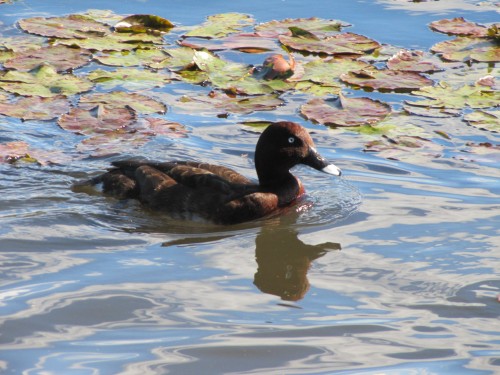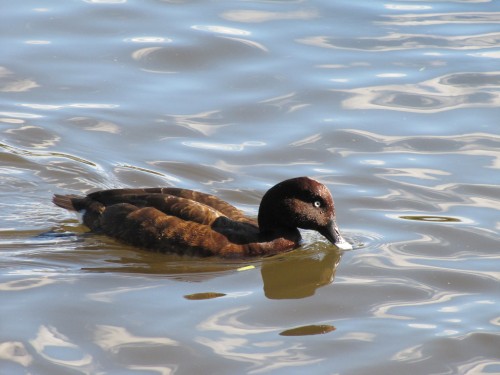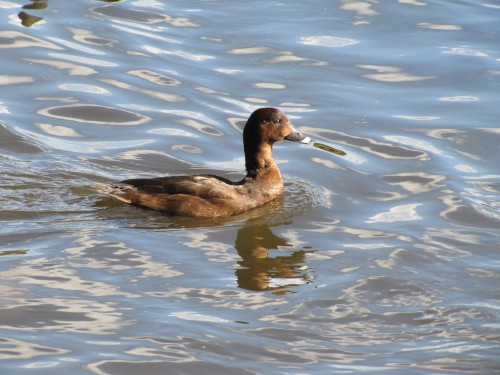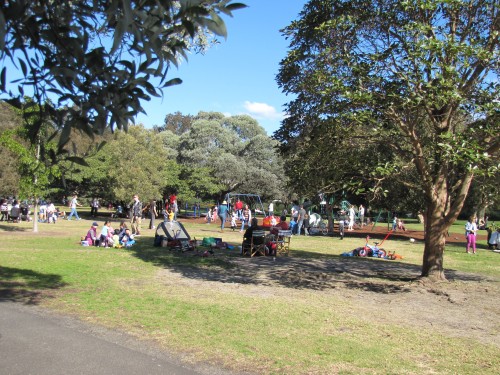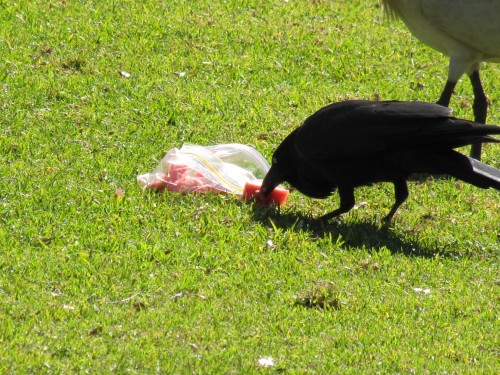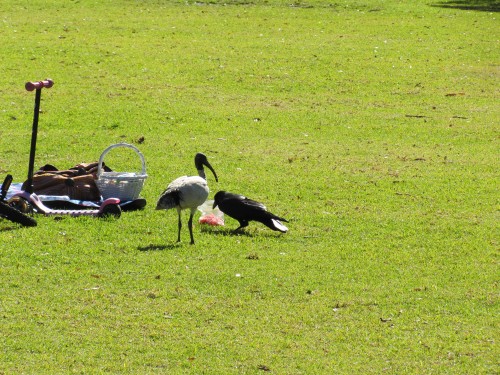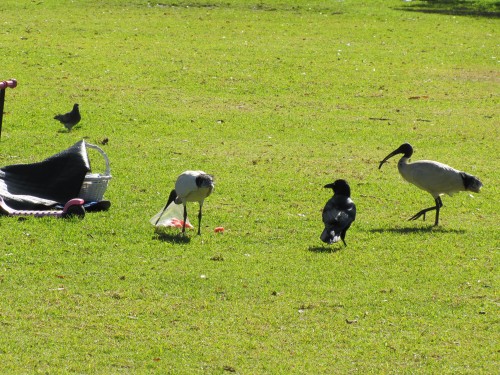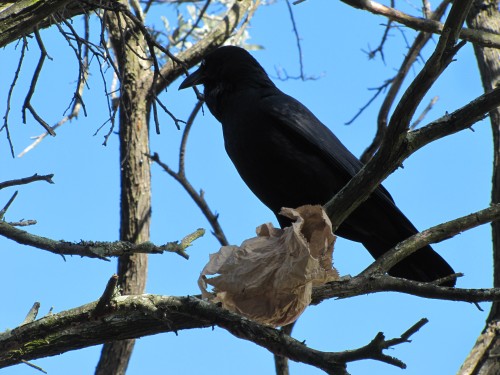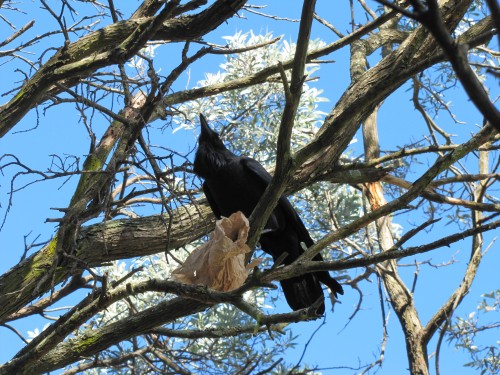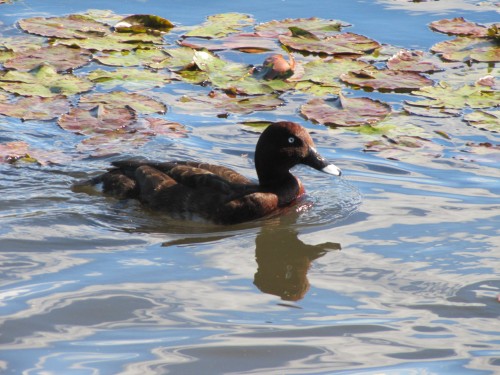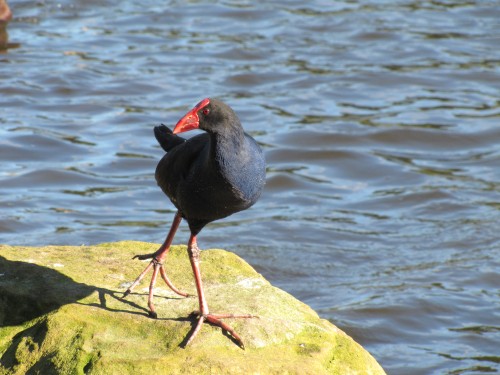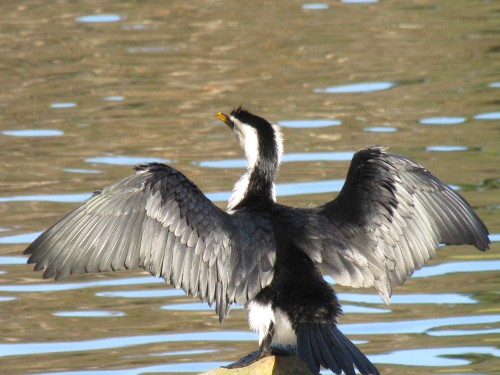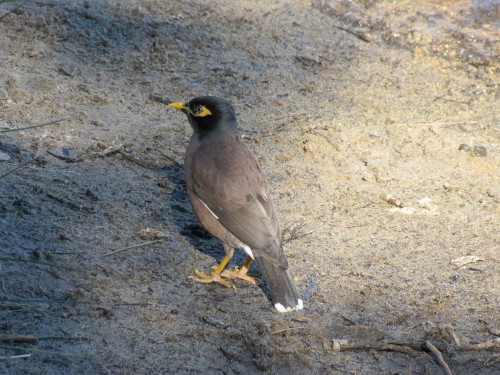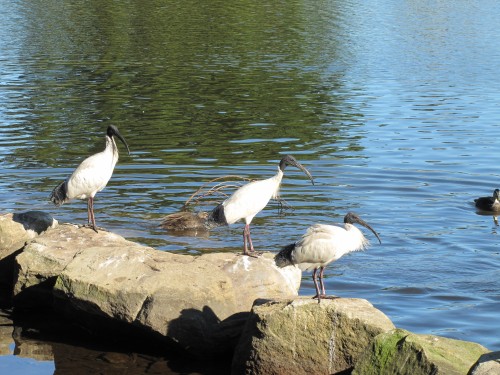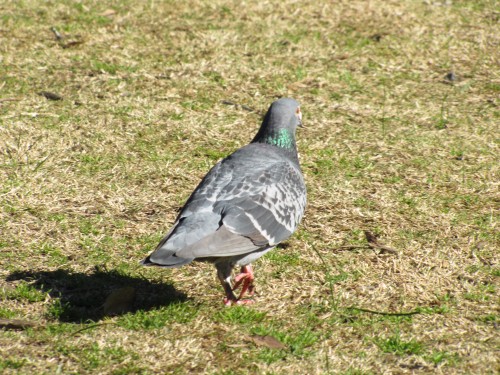White-eyed Duck or Hardhead
There are two commonly accepted common names for this duck: Hardhead and White-eyed duck.
The second name is self explanatory and most appropriate. It always helps in the process of identification.
The name “Hardhead” is also commonly used, but its origins are far from obvious. The initial use of this name seems to come from the early days of settlement in Australia. According to one reference book (see below) it was the name given by early shooters. “While there is no evidence that its skull is particularly solid Frith (1967) commented that ‘owing to a very dense plumage and apparently great stamina, [it] is hard to kill.’ It presumably arose spontaneously” because it was already in use in 1898.
The photos on this post were taken of several ducks on one of the ponds in Centennial Park, Sydney, earlier this year. The last photo is of a female; note the lack of a white eye.
References:
Fraser, I and Gray, J 2013: Australian Bird names: a complete guide. CSIRO Publishing, Collingwood, Victoria.
Frith H J, 1967, Waterfowl in Australia. Angus and Robertson, Sydney.
Clever crows and a bossy ibis
Earlier this year we spent just over 4 weeks visiting our son and his family in Sydney. Over recent weeks I’ve shared some of the birding experiences we had while there, and when we weren’t on grandparent duties. On the very last day we had a family picnic at Centennial Park (see photo above). Some of our son’s friends were also present and the weather was brilliant; bright sunshine and just a hint of a breeze.
Over the course of the afternoon I managed quite a nice list of the birds observed in the park, including a few flying overhead. The most prominent in-your-face species were the usual suspects: Noisy Miners, White Ibis and Common Mynas. We had to be on guard all the time and some of our friends’ biscuits were snatched from packets within a metre or two from where we sat.
One species I didn’t expect to join this thieving group was the local crows, or more precisely, Australian Ravens. Now I have known that crows and ravens are sneaky, opportunistic thieves since the days when I grew up on the family farm in the mallee districts of South Australia. The local Little Ravens thought nothing of snatching a few eggs from our laying hens and ducks. On this picnic, however, I saw them in a different light; they are very clever.
In the photo above I’ve captured an Australian Raven “red handed” in the act of stealing some food from someone’s picnic. The bird was clever enough to know what was food, how to get it out of the basket and even how to open the plastic bag to get at the food. I am not sure what the food is – perhaps some cut up watermelon.
Within a few seconds, the successful heist was noticed by several White Ibis patrolling the picnic area. In the photo above the raven was still in control of the stolen food, but the ibis was about to take over. They are the “bully boys” in this situation, one that is repeated in many picnic grounds throughout eastern Australia.
It wasn’t long before an ibis had taken over eating the human picnic food (see photo above). Within a very short time several other ibises joined in the feast. Even a Rock Dove (feral pigeon) comes over to see if it can get into the act (see above, top left corner of the photo).
The raven wasn’t to be outsmarted, however. It went to another picnic spot nearby, rummaged through the human food delicacies and came up with something edible in a paper bag. To minimise the chances of being noticed and being bullied out of its catch, it flew to a nearby tree. There it was successful in holding the paper bag against the branch, opening it up and getting at the food (see photos below).
Very clever.
Observe the feathers (called hackles) on the throat. This helps identify this bird as an Australian Raven.
Some birds of Centennial Park in Sydney
On our last day in Sydney earlier this year we went with our son and his family to a picnic at Centennial Park, south of the CBD. They were meeting with some of their friends. It was a Sunday and the weather was perfect: a bright, cloudless sky and a gentle breeze. Many other Sydney residents thought so too, and so the park was very crowded.
We had planned to meet near the playground, seeing that children made up half our number. I was on our third circuit of the road through the park when a space opened up about 100 metres from the group. I really think that Centennial Park could do with three or four decent playgrounds scattered in different sections, instead of just one tucked away in a corner with limited parking. Just saying.
As we ate our lunch and chatted I kept an eye scanning the park and the sky for birds. As the afternoon wore on I managed quite a respectable list of species. My camera was also kept handy, focussing particularly on those species which were quite at home mixing with the human visitors. Many times we had to shoo away the White Ibises and Noisy Miners attempting to raid our friends’ picnic food when they were too busy talking, or were watching the children play.
Later in the afternoon I took a short walk towards a nearby small lake. (There are about 9 of these of varying sizes.) It was here that I managed a few extra photos, mainly of water birds. It was a wonderful conclusion to four lovely weeks staying with our son and his family.
The following photos are just a sample of those taken. I’ll share more tomorrow.
